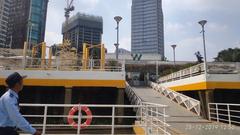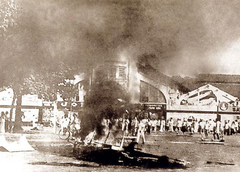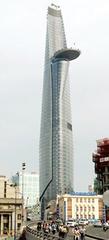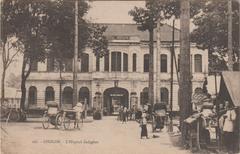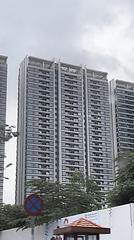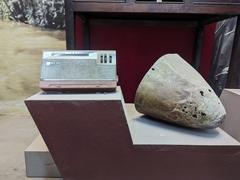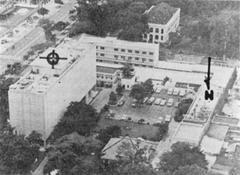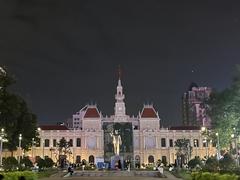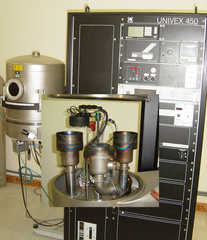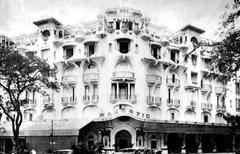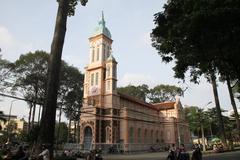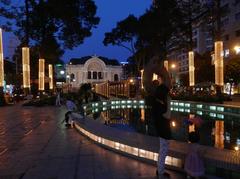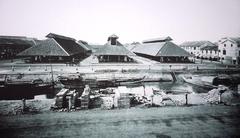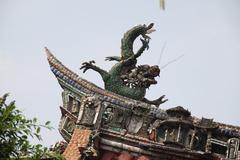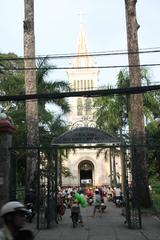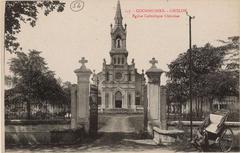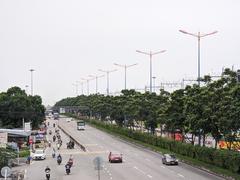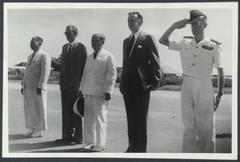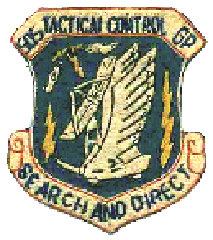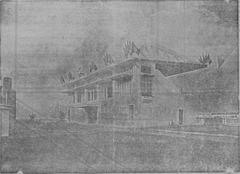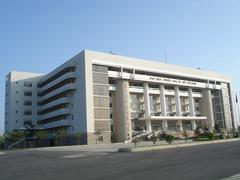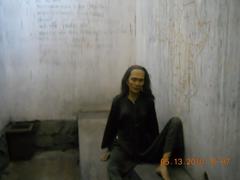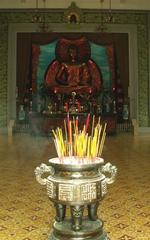Củ Chi Tunnels: Comprehensive Guide to Visiting Hours, Tickets, and Historical Sites in Ho Chi Minh City
Date: 14/06/2025
Introduction: The Significance of the Củ Chi Tunnels
Nestled approximately 40–70 kilometers northwest of Ho Chi Minh City, the Củ Chi Tunnels represent an extraordinary testament to Vietnamese resilience, strategic ingenuity, and endurance during wartime. Spanning over 250 kilometers, this intricate underground network was initially constructed in the late 1940s during the First Indochina War and later expanded during the Vietnam War to serve as living quarters, command centers, hospitals, and supply routes. The tunnels played a pivotal role in guerilla warfare and were instrumental during the 1968 Tết Offensive.
Today, the Củ Chi Tunnels offer visitors an immersive journey into Vietnam’s wartime past, enhanced by interactive exhibits, guided tours, and authentic site experiences. This guide provides a detailed overview—from historical context and tunnel layout to practical travel information, ticketing, and comparisons between the Ben Dinh and Ben Duoc sites. For further planning, consult trusted sources like Asia Tour Advisor, Antours Vietnam, and Vietnam Discovery.
Table of Contents
- The History and Construction of the Củ Chi Tunnels
- Strategic Importance During the Vietnam War
- Life Underground: Survival and Ingenuity
- Visiting the Củ Chi Tunnels: Practical Information
- Ben Dinh vs. Ben Duoc: Which Site to Choose?
- Nearby Attractions in Ho Chi Minh City
- Frequently Asked Questions (FAQ)
- Summary and Recommendations
- References and Further Reading
The History and Construction of the Củ Chi Tunnels
The origins of the Củ Chi Tunnels date back to the late 1940s, when local villagers and resistance fighters began digging passageways to evade French patrols and connect isolated hamlets. Built by hand from the region’s clay-rich soil, the tunnels provided crucial shelter, storage, and escape routes (Asia Tour Advisor).
Expansion and Strategic Role During the Vietnam War
As the Vietnam War intensified in the 1960s, the tunnel network expanded dramatically, eventually stretching toward the Cambodian border. The tunnels evolved into a multi-level labyrinth, serving as:
- Living quarters
- Command centers
- Field hospitals
- Weapons factories
- Kitchens with smokeless “Hoàng Cầm” stoves
- Secret passageways for surprise attacks, notably during the 1968 Tết Offensive (Wikipedia; Haivenu Vietnam)
Tunnel levels were engineered for survival:
- First level (~3 meters): Resistant to small arms fire and chemical agents
- Second level (~6 meters): Designed to withstand bomb blasts
- Third level (8–12 meters): Escape routes and ventilation, protected from poison gas
Life Underground: Survival and Ingenuity
Life in the tunnels was harsh—characterized by darkness, humidity, disease, food shortages, and constant threats from bombings and tunnel raids. The Viet Cong displayed remarkable ingenuity, utilizing camouflaged trapdoors, hidden ventilation shafts, and lethal booby traps to defend the network (Wikipedia). Above ground, smokeless stoves and camouflaged vents helped conceal activities from enemy forces.
Visiting the Củ Chi Tunnels: Practical Information
Location and Transportation
The Củ Chi Tunnels are situated roughly 40–60 km northwest of Ho Chi Minh City. Travel options include:
- Guided Tours: Most convenient, with round-trip transport and expert guides (Vietnam Discovery)
- Public Bus: Take bus #13 or #79 from Ben Thanh Bus Station to Củ Chi, then transfer to reach the tunnels (ToTravelToo)
- Private Car/Taxi: Flexible and fastest (1.5–2 hours)
- Speedboat: Scenic route from Tan Cang Pier via the Saigon River (BestPrice Travel)
Visiting Hours
- Open daily: 7:00 AM – 5:00 PM (last entry at 4:00 PM)
- Check ahead: Hours may vary for maintenance or holidays (Trip.com)
Tickets and Prices
- Ben Dinh: ~90,000–110,000 VND (about USD 4–5) for foreigners
- Ben Duoc: Similar pricing; check for updates
- Children: Discounts or free entry for those under 1.3 meters
- Guided tours: Additional fees apply
- Tickets can be purchased onsite or online (mainly for Ben Dinh via tour operators)
Accessibility
- Ben Dinh: Tunnels have been widened for tourists; accessible for most visitors, including those with mild mobility issues
- Ben Duoc: Preserves original narrow tunnels; recommended for physically fit visitors
- Above-ground exhibits are available at both sites for those unable to enter the tunnels
Guided Tours
Guided tours are highly recommended for historical context and safety. Most tours feature:
- Documentary introductions
- Expert guides fluent in English and other languages
- Demonstrations of booby traps and guerrilla tactics
- Opportunities for Q&A
Best Time to Visit and Travel Tips
- Dry season (November–April): Best for comfort; tunnels can be muddy in the rainy season (National Litographic)
- Early mornings/Weekdays: Avoid crowds and midday heat
- What to bring: Comfortable clothing, closed shoes, water, insect repellent, and a hat (ToTravelToo)
- Photography: Allowed in most areas, but ask guides if unsure
Ben Dinh vs. Ben Duoc: Which Củ Chi Tunnel Site Should You Visit?
Location and Accessibility
- Ben Dinh: ~1.5 hours from central Ho Chi Minh City; popular with tour groups; extensive facilities (Laure Wanders)
- Ben Duoc: ~2 hours from city center; less crowded, more preserved, ideal for independent travelers (Phong Nha Explorer)
Tunnel Structure and Authenticity
- Ben Dinh: Tunnels widened and reinforced for tourist safety; authentic atmosphere somewhat compromised (Antours Vietnam)
- Ben Duoc: Tunnels retain original dimensions and complexity; immersive and challenging experience
Visitor Experience
- Ben Dinh: Interactive activities (booby trap demos, shooting range, life-sized statues); commercialized atmosphere with cafes and souvenir shops (Cuchi Tunnels Tours)
- Ben Duoc: Educational, reflective, and tranquil; features Martyrs Memorial Temple and reenactment zones; limited commercialization (Antours Vietnam)
Comparative Table
| Feature | Ben Dinh | Ben Duoc |
|---|---|---|
| Distance from HCMC | ~1.5 hours | ~2 hours |
| Tunnel Authenticity | Modified, widened for tourists | Preserved, original dimensions |
| Crowd Level | High, especially with tour groups | Low, tranquil |
| Educational Value | Good, but more commercialized | High, immersive, reflective |
| Facilities | Extensive (cafes, shops, shooting range) | Limited, focus on memorial and history |
| Accessibility | Suitable for visitors with limited mobility | More challenging, less accessible |
| Recommended For | First-time visitors, families, large groups | History buffs, independent travelers |
Nearby Attractions in Ho Chi Minh City
- War Remnants Museum: In-depth exhibits on the Vietnam War
- Independence Palace: Iconic government building
- Notre-Dame Cathedral Basilica of Saigon: French colonial architecture
Frequently Asked Questions (FAQ)
Q: What are the Củ Chi Tunnels visiting hours?
A: 7:00 AM–5:00 PM daily (last entry at 4:00 PM).
Q: How much are tickets?
A: ~90,000–110,000 VND for foreigners; discounts for children.
Q: Are the tunnels wheelchair accessible?
A: Tunnel sections are not wheelchair accessible; above-ground exhibits can be reached.
Q: How do I get there from Ho Chi Minh City?
A: Options include guided tours, private cars/taxis, public buses, or speedboats.
Q: Which site should I visit, Ben Dinh or Ben Duoc?
A: Ben Dinh is more accessible and tourist-friendly; Ben Duoc is more authentic and less crowded.
Q: Is it safe to enter the tunnels?
A: Yes, tourist sections are reinforced and monitored by guides.
Q: How long should I plan for a visit?
A: 2–3 hours at the site, excluding travel time.
Summary and Recommendations
The Củ Chi Tunnels remain one of Vietnam’s most iconic historical landmarks, offering visitors a unique, educational, and often emotional journey into the realities of wartime survival and ingenuity. Whether you choose the tourist-friendly Ben Dinh or the authentic, tranquil Ben Duoc, each site provides valuable insight into Vietnam’s history.
Combine your tunnel visit with other historical sites in Ho Chi Minh City for a comprehensive understanding of the country’s past. For enriched experiences, guided tours and multimedia resources are highly recommended. Download the Audiala app for offline guides, maps, and insider tips, and follow us on social media for travel inspiration.
References and Further Reading
- Asia Tour Advisor
- Antours Vietnam
- Vietnam Discovery
- Laure Wanders
- Cuchi Tunnels Tours
- Phong Nha Explorer
- ToTravelToo
- BestPrice Travel
- Trip.com
- National Litographic
Images and media should include descriptive alt tags such as “Củ Chi Tunnels entrance,” “Inside Củ Chi Tunnels,” and “Visitors exploring Củ Chi Tunnels historical site” for optimal SEO.
